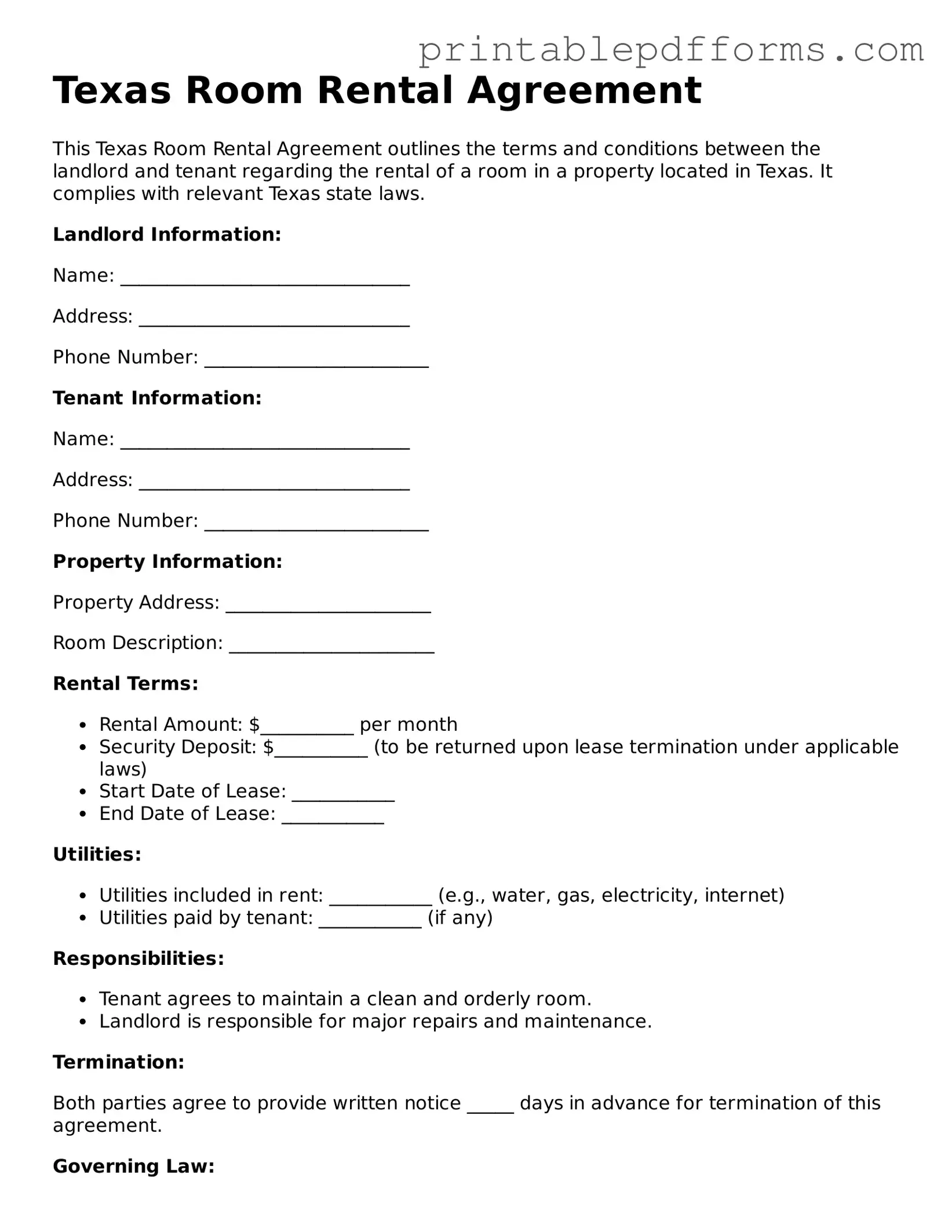Texas Room Rental Agreement
This Texas Room Rental Agreement outlines the terms and conditions between the landlord and tenant regarding the rental of a room in a property located in Texas. It complies with relevant Texas state laws.
Landlord Information:
Name: _______________________________
Address: _____________________________
Phone Number: ________________________
Tenant Information:
Name: _______________________________
Address: _____________________________
Phone Number: ________________________
Property Information:
Property Address: ______________________
Room Description: ______________________
Rental Terms:
- Rental Amount: $__________ per month
- Security Deposit: $__________ (to be returned upon lease termination under applicable laws)
- Start Date of Lease: ___________
- End Date of Lease: ___________
Utilities:
- Utilities included in rent: ___________ (e.g., water, gas, electricity, internet)
- Utilities paid by tenant: ___________ (if any)
Responsibilities:
- Tenant agrees to maintain a clean and orderly room.
- Landlord is responsible for major repairs and maintenance.
Termination:
Both parties agree to provide written notice _____ days in advance for termination of this agreement.
Governing Law:
This agreement shall be governed by the laws of the State of Texas.
Signatures:
Landlord Signature: __________________________ Date: ___________
Tenant Signature: ___________________________ Date: ___________
